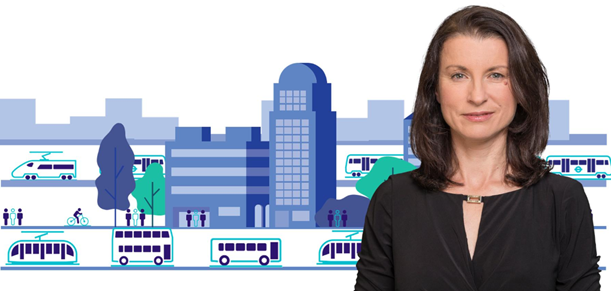30 May 2021
EU Green Week: putting public transport at the heart of mobility strategies to combat air pollution

This year’s EU Green Week is themed around pollution which affects everybody and is the largest environmental cause of multiple health problems and premature deaths. It seems obvious that we, as a society, need to act if we are to reduce pollution – and we need to accelerate this agenda!
When it comes to the transport sector, we know that today, the major threat to clean air is posed by traffic emissions[1]. Petrol and diesel engines emit a variety of pollutants and particulate matter which have an increasing impact on urban air quality. In addition, particles from brake, tyre and road surface wear also directly contribute almost half of particle pollution from road transport[2]. This means that the problem of air pollution will not simply be solved by replacing all diesel and petrol cars with electric cars.
So how can we reduce air pollution in our European cities?
Key is to reduce the use of cars, electric or not, by getting people on to more sustainable forms of transport: active mobility and public transport. Such modal shift to public transport and active mobility is essential in reducing air quality. It’s an obvious equation, but less vehicles on the road equals cleaner air. We witnessed this first-hand during the pandemic, with lockdowns around the world. In the UK, nitrogen dioxide in urban environments decreased between 30-40%[3]! In France, the French health agency reported that 2300 deaths were avoided thanks to reduced emissions of air pollution particles during the first lockdown. An additional 1200 fatalities were prevented as a result of reduced exposure to nitrogen dioxide, mainly linked to road traffic[4].
Secondly, the ratio of clean public transport vehicles needs to be further increased alongside modal shift, by supporting the use of alternative fuels.
However, this may seem easier said than done. Many people don’t automatically make public transport their first choice and often turn to the comfort of their private car, especially in areas where public transport services are infrequent and therefore unattractive.
This means that we need to make public transport more attractive and rethink mobility networks if we are to facilitate truly sustainable and multimodal journeys. This can be achieved working in partnership and with the right support from the EU, national governments, and local authorities.
The EU’s forthcoming revision of the Urban Mobility Package will present an opportunity to collectively address urban mobility across Europe. By encouraging cities to adopt Sustainable Mobility Plans, creating more sustainable transport networks, we can move the dial on cleaner air.
To create sustainable and integrated transport networks, public transport needs to become the backbone of mobility strategies across Europe. Active mobility and shared modes, such as e-scooters and bicycles, should feed mass transport systems. Cities need to consider how to build “mobility-hubs” with park and ride facilities for private cars and interchanges, enabling people to easily change from one mode of transport to another and be connected to places of leisure, work, or education.
Success will also rely on legislation and clear direction, both at EU- and at national-level. Clear direction is needed to enable local authorities and transport companies to focus on decarbonisation and dare to redesign transport networks. Where clear targets are set, all parties have long-term certainty allowing for sustainable strategies to be developed and investments to be made.
If we, the EU, national governments, local authorities, manufacturers, operators and citizens, all work together, our combined efforts can lead to reduced emissions, improved air quality and better and more sustainable transport.
Let’s be brave and redesign transport networks with public transport at their core for a cleaner and less polluted future for the next generation.
[1] DEFRA, Causes of air pollution, (2021)
[3] DEFRA, Estimation of changes in air pollution emissions, concentrations and exposure during the Covid-19 outbreak in the UK, (2020)
[4] Santé publique France, Pollution de l’air ambiant: nouvelles estimations de son impact sur la santé des Français (2021); Euractiv (english article, April 2021)
Contact information
Alex Peers
Digital Channels and Engagement Manager
+44 (0) 7583 036836
peersal@arriva.co.uk

